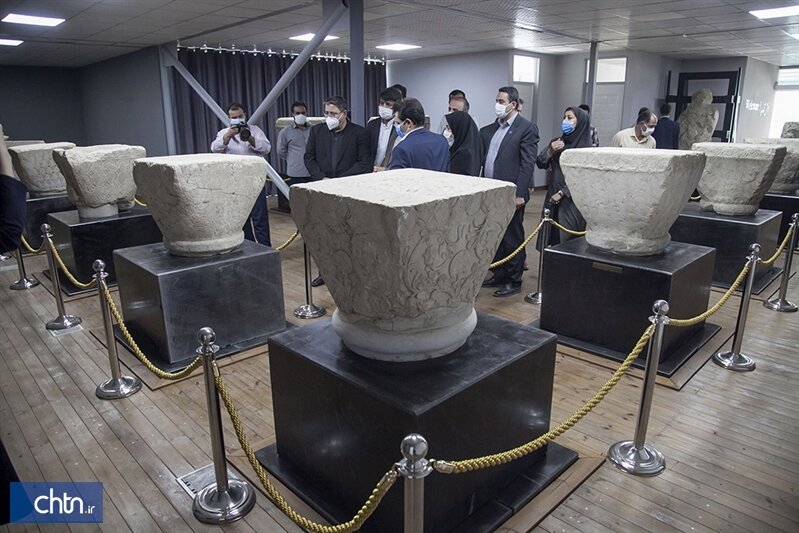Museum featuring splendid Sassanid column capitals inaugurated in western Iran

TEHRAN – A museum dedicated to stone column capitals lavishly carved in the Sassanid era (224–651) was opened to the public on Thursday in Kermanshah province, western Iran.
A select of 12 column capitals were put on a show at the first phase at the museum located within the Taq-e Bostan historical site, which was originally the site of a Parthian royal hunting garden, but the Sassanians later added their own regal stamp.
The opening ceremony was attended by deputy governor general Mehrdad Salari, provincial tourism chief Omid Qaderi, and a number of local officials and history buffs on Thursday, CHTN reported.
Addressing the ceremony, Qaderi reminded attended of the rich history and cultural Heritage of Kermanshah, saying “These 12 capitals have been unearthed from [excavations at] the Jameh Mosque of Kermanshah, [the UNESCO-registered] Bisotun, Abshuran [neighborhood], and urban outskirts. We have put the here on display in a bid to further introduce the rich history and culture of Kermanshah to the people in Iran and the globe.”
“We have numerous historical and ancient relics in the province but, unfortunately, we haven’t been able to demonstrate those in a proper way.”
Talking about the capitals, the official said, “These capitals are one of the most delicate and valuable examples of sculpturing and stone arts of the Sassanids and for this reason, they have long been considered by scholars,”
“These columns were probably prepared for the construction of a royal palace in the Sassanid period, but the construction of the palace remained incomplete due to the fall of the Persian dynasty.”
“Of these magnificent capitals that bear carvings of inverted tulips are beautifully and delicately drawn,
“There are another 120 pieces of such magnificent capitals that bear delicate carvings of inverted tulips being kept at the treasure trove of the province… And we hope we will be able to put them on public shows.”
Inscribed into the base of a towering cliff, Taq-e Bostan is home to extraordinary Sassanian bas-reliefs of ancient victorious kings. The biggest alcove features elephant-mounted hunting scenes on the sidewalls and highlights the coronation of Khosrow II (r 590–628), beneath which the king rides off in full armor and chain mail (half a millennium before the European Black Prince made it fashionable). The second niche shows kings Shapur III and his Roman-stomping grandfather Shapur II. To the right of the niches is a fine tableau again showing Shapur II (r 379–383), in which he is depicted trampling over the Roman emperor Julian the Apostate (whom he defeated in 363) and receiving a crown of blessings from the Zoroastrian god Mithras.
The Sassanid era is of very high importance in the history of Iran. Under Sassanids, Persian art and architecture experienced a general renaissance. Architecture often took grandiose proportions such as palaces at Ctesiphon, Firuzabad, and Sarvestan that are amongst highlights of the ensemble.
Crafts such as metalwork and gem-engraving grew highly sophisticated, yet scholarship was encouraged by the state. In those years, works from both the East and West were translated into Pahlavi, the language of the Sassanians. In 2018, UNESCO added an ensemble of Sassanian historical cities in southern Iran -- titled “Sassanid Archaeological Landscape of Fars Region”-- to its World Heritage list.
AFM/MG
